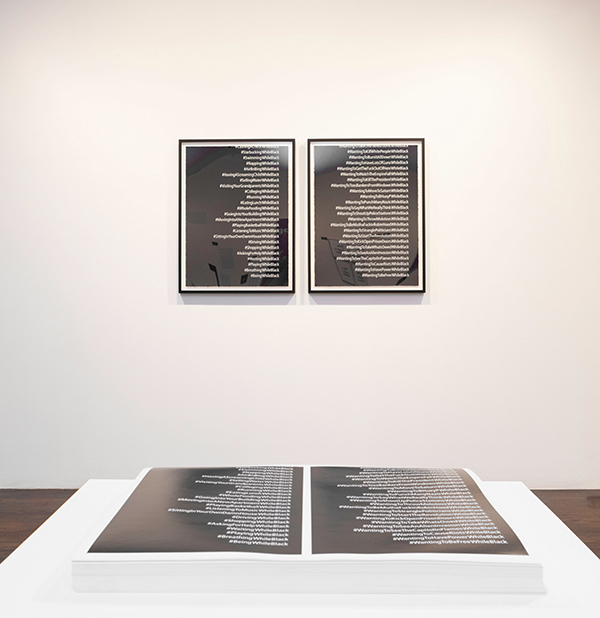New York Times Review of Revolution from Without...
By JILLIAN STEINHAUER
Left, Tony Cokes’s video “Evil.12. (edit.b): Fear, Spectra & Fake Emotions,” from 2009; and “Evil.13 (The Triumph of Evil),” from 2006. CreditTony Cokes, Greene Naftali, New York and Electronic Arts Intermix (EAI), New York; Julia Gillard. [image description: video screens are on the left and right of the image, they have backgrounds in red and blue respectively and both have text in a white font, which is not legible in this image]
“Revolution from Without …” gathers work by five artists and two collectives dealing with access to power and human rights. That's a broad theme, but the exhibition coalesces around a more specific one: the political uses of language.
Tony Cokes is an anchor, with three videos from his “Evil” series, in which texts from speeches, news reports and cultural commentaryflash against solid-color backgrounds, like karaoke lyrics, and accompanied by popular music. In one, passages from a scholarly essay about the Homeland Security Department’s color-coded terrorism alert system are calibrated to its colors. Mr. Cokes isolates words in order to reinvest them with meaning.
Also incorporating an academic text, Kameelah Janan Rasheed’s “A Rather Precarious Syntax” (2019) centers on hope, made famous as a symbol during Barack Obama’s presidential campaign. The installation consists of disordered pages from an essay on Black nihilism hung around her own printed declarations, like “Our Hope Is a Sloppy Menace.” Throughout the run of the show, Ms. Rasheed has adjusted the work to form different permutations, suggesting a refreshing inquisitiveness.
Dread Scott's “#While Black (offset),” from 2019, offset lithographs; and “#While Black,” from 2018, diptych in screenprint. Credit Dread Scott; Julia Gillard. [image description: in the foreground a stack of white paper with two rectangles of black print and white text documenting different activities ‘while black’ sit on top of a square table, in the background the same images are split into two black frames hung on a white wall]
In contributions by Dread Scott and the Russian collective Chto Delat, language becomes a more recognizable political tool. Two new banners by Chto Delat (whose name means “What is to be done?”) contain, on one side, striking imagery of hybrid human-animal figures, made partly from recycled clothes; on the other, poetic texts emphasize state brutality against immigrants and activists.
A stenciled work byScottpicks up the thread by shifting the burden of responsibility to the viewer. It states, “By reading this you agree to overthrow dictators.” Made on the occasion of President Trump’s inauguration, the piece demonstrates theunsettling effectof a well-aimed linguistic charge.
Through May 4. The 8th Floor, 17 West 17th Street, Manhattan; 646-839-5908, the8thfloor.org.


